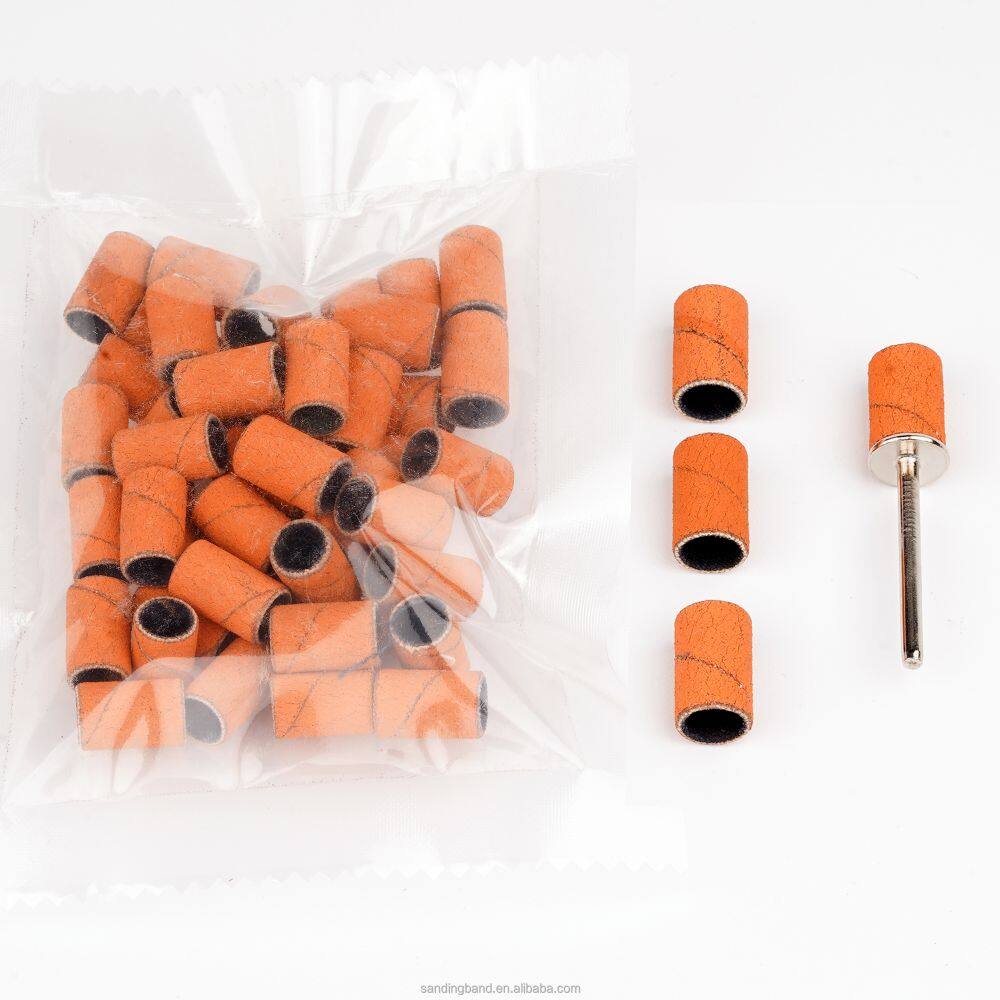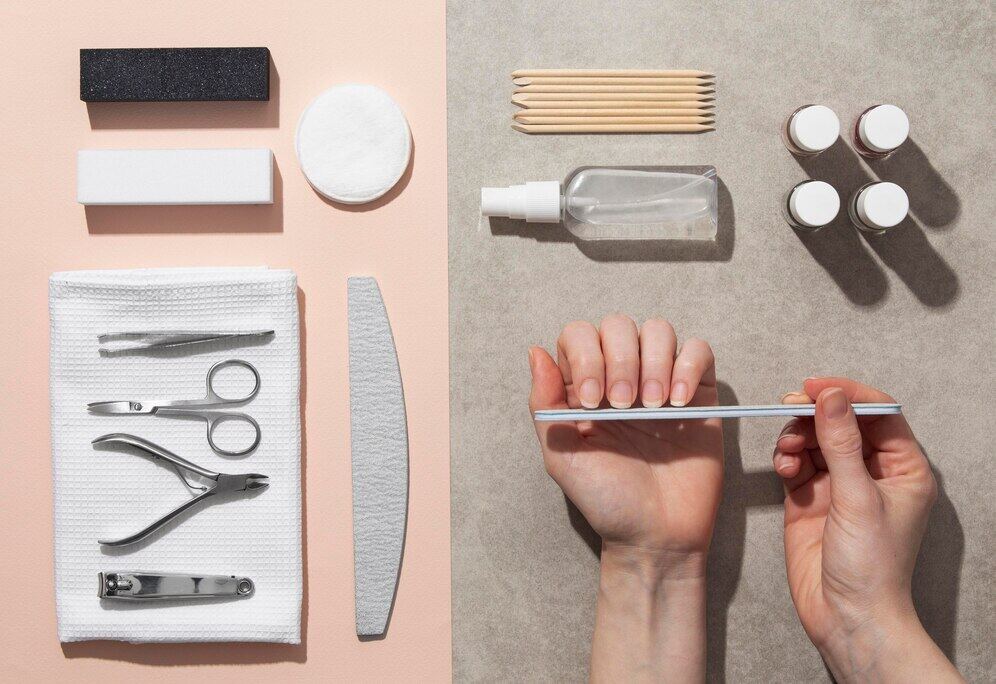When it comes to nail care, the tools you use can make all the difference in achieving that perfect look. Among these tools, sanding bands are a staple in professional nail salons and for at-home nail enthusiasts. However, a common question arises: Can sanding bands be used on natural nails, or are they strictly for artificial nails? Understanding the correct usage is crucial to maintaining the health and beauty of your nails.
What Are Sanding Bands?
Understanding Sanding Bands
Sanding bands are small cylindrical sleeves covered with abrasive material, typically used in conjunction with an electric nail drill. They come in various grit levels, ranging from coarse to fine, and are designed to shape, file, and smooth surfaces. These bands are a favorite tool for professionals because they efficiently and effectively manage nail surfaces, making the process of nail care faster and more precise.

Different Grit Levels and Their Uses
- Coarse Grit (80-100): Typically used for heavy-duty tasks, such as removing the bulk of artificial nail enhancements like acrylics or gels.
- Medium Grit (150-180): Ideal for refining and shaping artificial nails.
- Fine Grit (240 and above): Used for buffing and smoothing surfaces, including natural nails.
Understanding these grit levels is essential when deciding whether or not sanding bands are suitable for natural nails.
The Risks of Using Sanding Bands on Natural Nails
Potential Damage to Natural Nails
Using sanding bands on natural nails can be risky, especially if the wrong grit is used. Natural nails are much thinner and more delicate than artificial nails, and using a coarse or even medium grit sanding band can cause significant damage. This could include:
- Thinning of the Nail Plate: Over-filing with a sanding band can thin the nail plate, leading to weakened nails that are more prone to breakage and peeling.
- Heat Generation: The friction from the sanding band can generate heat, which may cause discomfort or even a burning sensation on the natural nail.
- Permanent Damage: If not used carefully, sanding bands can cause permanent damage to the nail matrix, leading to irregular nail growth.
When It's Safe to Use Sanding Bands on Natural Nails
While there are risks, sanding bands can be used on natural nails with the right approach. The key is to use a fine grit band (240 and above) and to apply very light pressure. Here are some instances where using a sanding band on natural nails might be appropriate:
- Buffing the Nail Surface: A fine grit sanding band can be used to gently buff the surface of the natural nail to remove ridges and smooth the texture. This should be done sparingly to avoid thinning the nail plate.
- Preparing for Gel Polish: Before applying gel polish, a fine grit sanding band can help create a slightly roughened surface, which allows the polish to adhere better. However, this should be done with caution and only by experienced individuals.
- Cuticle Care: Some nail technicians use fine grit sanding bands to gently remove excess cuticle buildup. This requires a delicate touch and should only be done by professionals to avoid damaging the nail or surrounding skin.
Best Practices for Using Sanding Bands on Natural Nails
Choosing the Right Grit
When working with natural nails, always opt for the finest grit available. A 240-grit sanding band is ideal for gently buffing and refining the surface without causing unnecessary damage. Avoid using coarse or medium grit bands on natural nails, as these are too abrasive and can lead to significant harm.
Proper Technique and Precautions
- Light Pressure: Always use light pressure when working on natural nails. The goal is to smooth and refine, not to remove layers of the nail.
- Short Bursts: When using a sanding band, apply it to the nail in short bursts to avoid generating heat. Prolonged contact can cause a burning sensation and damage the nail.
- Regular Monitoring: Continuously monitor the condition of the nail while working. If you notice any signs of thinning or discomfort, stop immediately.
Alternatives to Sanding Bands for Natural Nails
For those concerned about the risks of using sanding bands on natural nails, there are several alternatives:
- Traditional Nail Files: A traditional nail file, especially one with a fine grit, can be a safer option for shaping and smoothing natural nails.
- Buffer Blocks: Buffer blocks are designed to gently smooth the surface of the nail without the risks associated with sanding bands.
- Glass or Crystal Files: These files are gentle on natural nails and can be used to shape and smooth without the risk of over-filing.
Using Sanding Bands on Artificial Nails
The Ideal Use of Sanding Bands
While the use of sanding bands on natural nails is limited, they are ideal for working with artificial nails. Whether you're dealing with acrylics, gels, or other nail enhancements, sanding bands are perfect for:
- Shaping and Sculpting: Coarse grit sanding bands can quickly shape artificial nails to the desired length and style.
- Smoothing Surfaces: Medium grit bands are excellent for smoothing the surface of artificial nails before the application of polish.
- Removing Bulk: If you need to remove a significant amount of material, such as when transitioning from one style of nail enhancement to another, sanding bands are the go-to tool.
Precautions When Working with Artificial Nails
Even though sanding bands are generally safe for artificial nails, it's still important to use them correctly:
- Avoid Over-Filing: Just like with natural nails, over-filing can weaken artificial nails, making them more prone to breakage.
- Use the Right Grit: Choose the appropriate grit for the task at hand. Coarse grits are for bulk removal, while finer grits are for finishing touches.
- Monitor Heat: Even with artificial nails, excessive heat from friction can cause discomfort to the client. Always work in short bursts.
Conclusion: The Verdict on Sanding Bands and Natural Nails
So, can sanding bands be used on natural nails? The answer is yes, but with significant caution. Sanding bands are best suited for artificial nails, where their efficiency and power can be fully utilized. When it comes to natural nails, a fine grit band used with a delicate touch can safely smooth and buff, but overuse or incorrect application can lead to damage.
For anyone considering using sanding bands on natural nails, it's crucial to understand the risks and to follow best practices carefully. Whether you're a professional nail technician or a DIY enthusiast, always prioritize the health of your nails, choosing the safest and most appropriate tools for the job.

